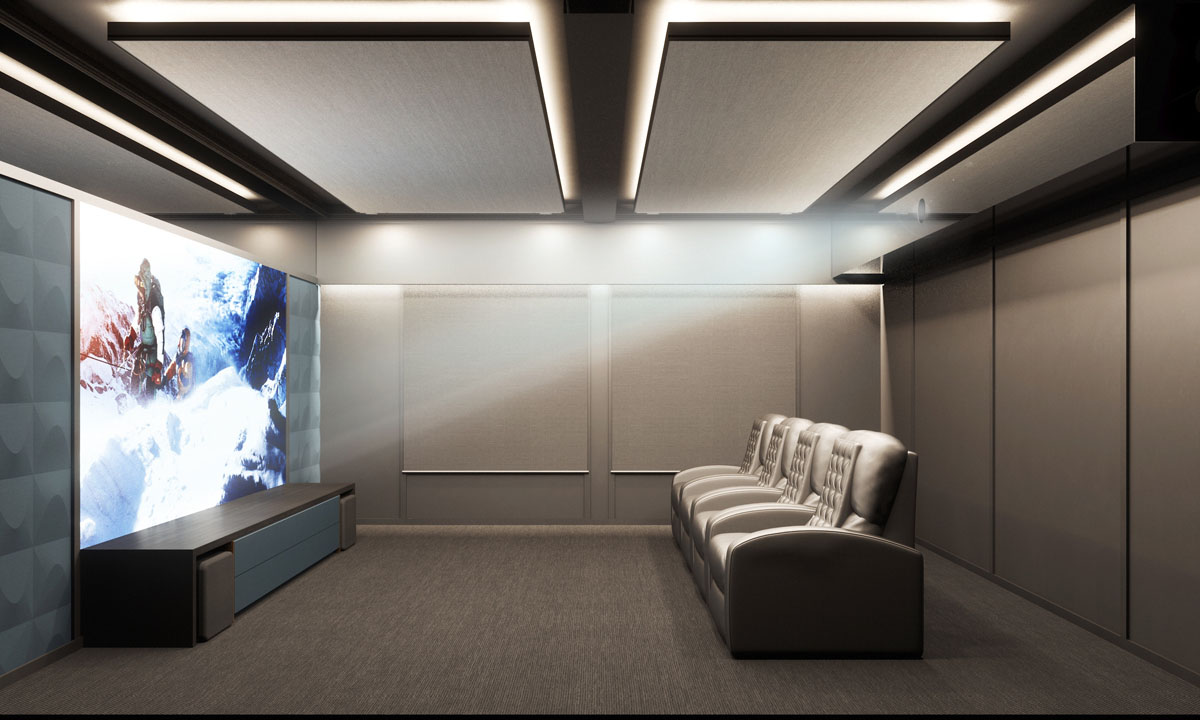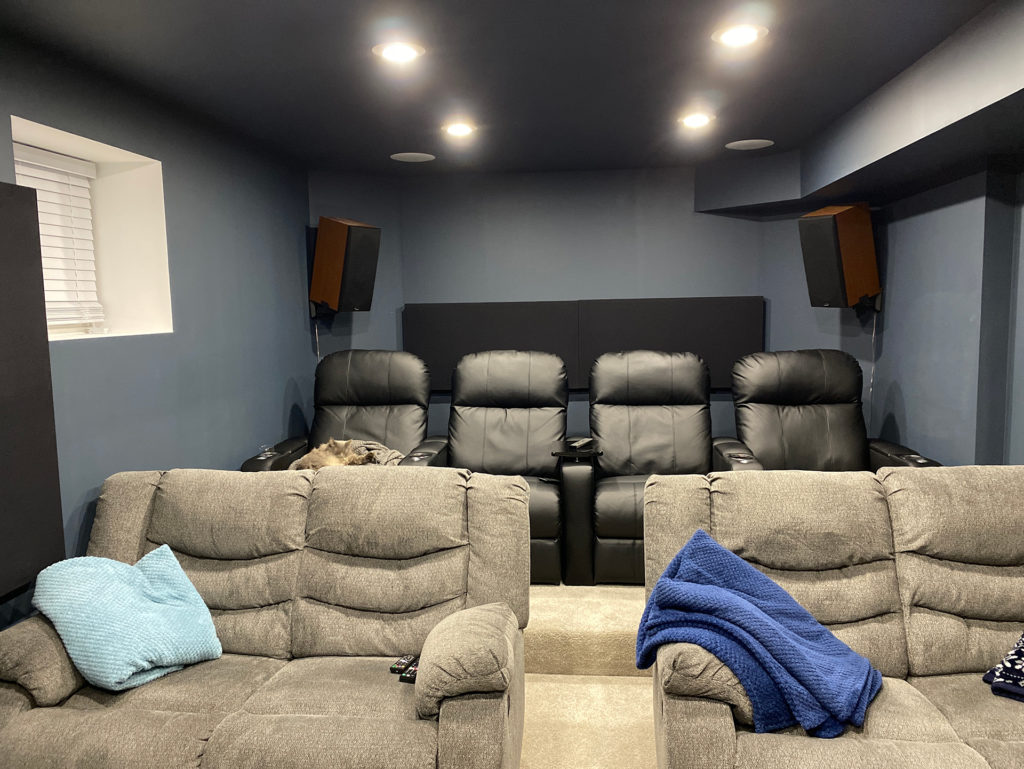Top Reasons to Choose Home Theater Tampa for Your Future Project
Top Reasons to Choose Home Theater Tampa for Your Future Project
Blog Article
Home Theater 101: Everything You Required to Know for a Cinematic Experience in the house
Developing a home movie theater that matches the motion picture experience of a commercial theater includes careful consideration of multiple parts, including screen choice, sound systems, and area format. Each component plays a pivotal duty in achieving the preferred setting and performance. Whether you are considering the suitable screen size or the details of border noise, recognizing these fundamentals is essential. As we explore these vital components, it becomes evident that the options made can considerably impact your general viewing experience, leaving one to contemplate how these choices will certainly form your personal cinema.
Choosing the Right Screen
When establishing up a home theater, choosing the ideal display can make or break the watching experience - tampa home theater. The screen offers as the focal point of your configuration, affecting image top quality, watching angles, and general aesthetic. Key elements to think about include screen kind, resolution, and size
First, identify the ideal display size based on your area dimensions and seating range. Next, pick between different screen types, such as fixed-frame, mechanized, or retracting displays, each offering distinctive benefits.
Resolution is another essential aspect. For a really immersive experience, think about a display made for 4K or even 8K content, making sure sharpness and clearness. Additionally, think about the display's gain, which impacts brightness and contrast; a higher gain can boost brightness in well-lit areas, while a lower gain might be preferable for darker settings.
Selecting Sound Equipment
Audio equipment is an important part of any type of home movie theater system, substantially boosting the general viewing experience. The choice of audio equipment can determine the deepness, quality, and immersion of sound, vital for producing a cinematic ambience.
When picking audio tools, take into consideration a border audio system, which commonly includes a receiver, several audio speakers, and a subwoofer. A 5.1 or 7.1 channel system is recommended, where the initial number represents the speakers and the second the speaker, providing an immersive soundscape. The receiver is the heart of the system, managing sound and video clip signals, and ought to support contemporary formats like Dolby Atmos for an enhanced spatial experience.
Quality audio speakers are important; seek versions that supply a balanced audio profile with great bass feedback. Floor-standing audio speakers can generate richer audio, while bookshelf options save space. In addition, think about wireless alternatives for convenience of setup, although wired systems frequently provide remarkable performance.
:max_bytes(150000):strip_icc()/home-theater-room-getty-vostok-57f55aeb3df78c690f118170.jpg)
Optimum Seating Plans
Creating an ideal home movie theater experience hinges significantly on optimum seating arrangements. The arrangement of seats plays a crucial role in both convenience and viewing top quality, straight influencing the general cinematic experience.
First, think about the screen dimension and seeing distance. A common guideline is to place seats at a distance approximately 1.5 to 2.5 times the angled size of the display. This guarantees an immersive experience without straining the eyes.
Next, altitude is essential. The back rows must be Homepage greater than the front to prevent obstructions if your seats is in a tiered style. go to the website For flat seating, ensure that the front row is not too near the screen, and that everyone has a clear line of vision.
Moreover, consider the plan in terms of social characteristics. Group seats can improve the common experience, while individual seats might be favored for individual viewing.

Last but not least, prioritize convenience with ergonomic seats that supports extended viewing durations. Including reclining chairs or cushioned seats can significantly boost the experience, making the home cinema a recommended location for both amusement and leisure.
Lighting and Setting
Reliable illumination and atmosphere are crucial parts of a well-designed home theater, as they dramatically affect the checking out experience. The ideal lights can improve the motion picture feel, while inadequate choices can diminish it. For ideal outcomes, think about a layered lighting strategy that includes ambient, job, and accent lighting.
Ambient lighting gives basic illumination, making sure that the room is not totally dark, which can strain the eyes. Dimmer buttons are highly suggested, permitting adjustments based upon the material being watched. Task lighting, such as wall sconces or floor lamps, provides useful illumination for activities like analysis or browsing the area without interfering with the total atmosphere.
Accent illumination can be made use of to highlight building features or develop prime focus, including deepness and passion to the space. LED strip lights behind displays or along racks can provide a subtle glow that improves the aesthetic experience without frustrating the audience.

Wiring and Installation Tips
A tactical circuitry arrangement is critical for attaining optimum performance in your home movie theater system. Appropriate electrical wiring not only guarantees top notch sound and video signals however additionally boosts the total visual Full Report of your space. Begin by mapping out your format, recognizing where each part will certainly be put, including your screen, audio speakers, and receiver.
When selecting cords, focus on top quality, appropriately assessed circuitry to reduce signal loss. HDMI cords must be used for video clip connections, while speaker wire ought to match the requirements of your speakers and amplifier. Opt for in-wall ranked wires to adhere to safety requirements and keep a tidy appearance.
:strip_icc()/heritage-lake-model-2524d1f5bc974300a65f3187a6ebd929.png)
Final Thought
In recap, creating an exceptional home movie theater experience calls for mindful consideration of various components, consisting of display choice, audio devices, seating plans, illumination, and electrical wiring. Each element plays an essential duty in accomplishing ideal efficiency and atmosphere, ultimately enhancing the enjoyment of home entertainment. By focusing on these variables, a cinematic atmosphere can be effectively reproduced, enabling immersive viewing experiences that equal traditional movie theater settings. Attention to detail in each location is important for total fulfillment.
Producing a home movie theater that rivals the motion picture experience of an industrial theatre entails mindful factor to consider of numerous components, including screen selection, audio systems, and area layout.When establishing up a home cinema, picking the right screen can make or break the seeing experience. Next, choose between different display kinds, such as fixed-frame, motorized, or retracting displays, each offering unique advantages. For an absolutely immersive experience, take into consideration a display created for 4K or even 8K material, making certain intensity and clarity.In summary, developing a phenomenal home movie theater experience needs mindful consideration of different aspects, consisting of screen option, audio tools, seating arrangements, lighting, and wiring.
Report this page